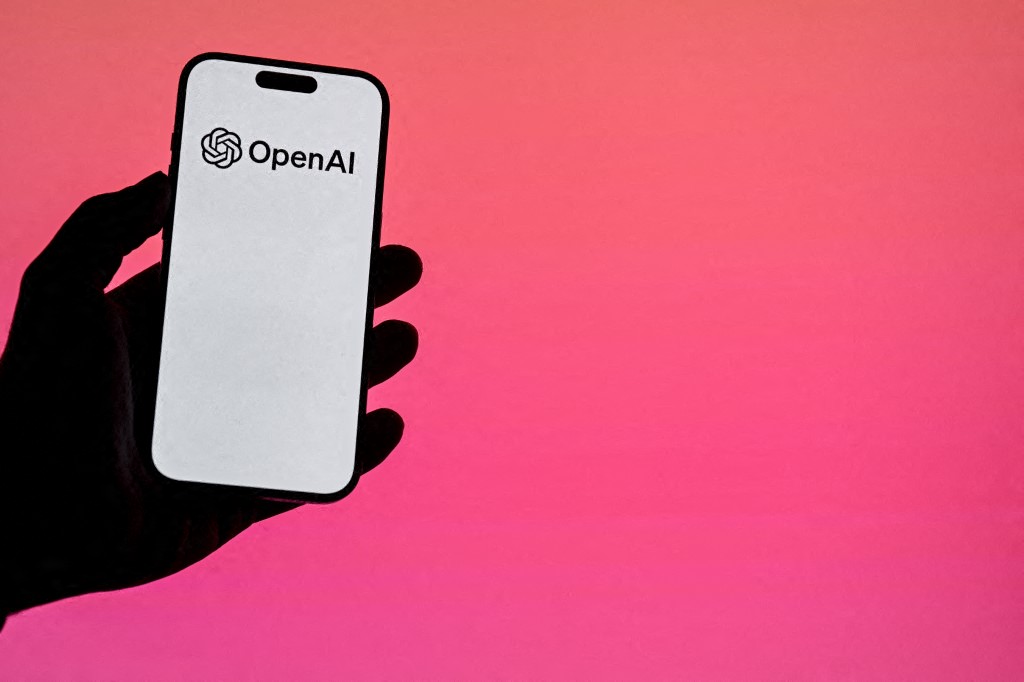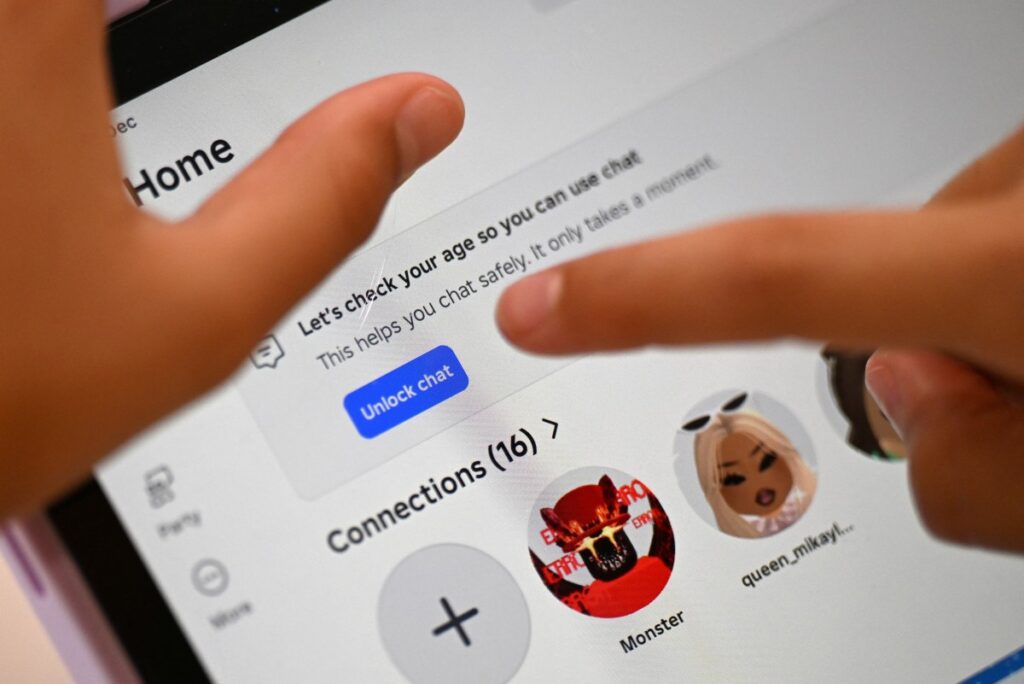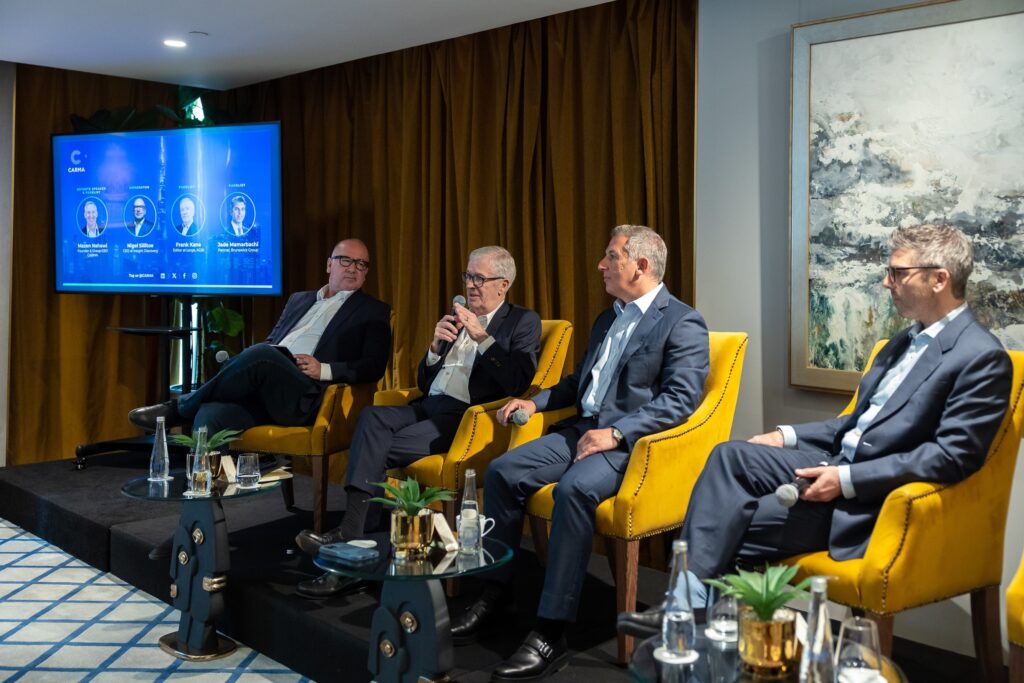Creative management platform, Bannerflow, has published a new report that charted the growth of in-house in 2020. he report surveyed over 200 senior marketers in Europe. In-housing flourished in 2020, as the pandemic accelerated the need for marketing teams to have greater efficiency, collaboration and control over brand messaging — all of which are known drivers and benefits when it comes to bringing all or part of digital marketing in-house. From team structures to skill requirements, the report takes an important look at the impact of the pandemic on in-house teams, agency spend and the use of technology.
The state of in-housing: An extraordinary year
The pandemic has been a catalyst for change. Every industry and workforce has had to adapt in remarkable ways over the past 12 months. For marketeers, many were thrust into a remote working environment, not conducive to the collaborative nature of the creative job. For marketeers seeking cost-savings, greater efficiency and being closer to the brand during a tough year, in-housing proved to be an attractive solution. But this solution wasn't foreign. The trend of bringing digital marketing in-house was already picking up, well before the pandemic hit. Despite the otherwise distributed nature of work, mid-pandemic, the study has found that in-housing, has brought teams closer together and made them more collaborative, increasing team size and creativity.
In-house teams tend to be conservatively sized, which means that any increase in head count is significant. The majority of respondents reported teams with 10 or less people and only two percent of teams reported more than 20 people. Mid-sized teams were in a favourable position to increase their growth in team members. 62% of those who have teams of 6–10 people increased their head count by one to two members. But 56% of smaller teams have seen a decrease by 1–2 people — perhaps a symptom of smaller brands and teams experiencing the negative effects of COVID-19.
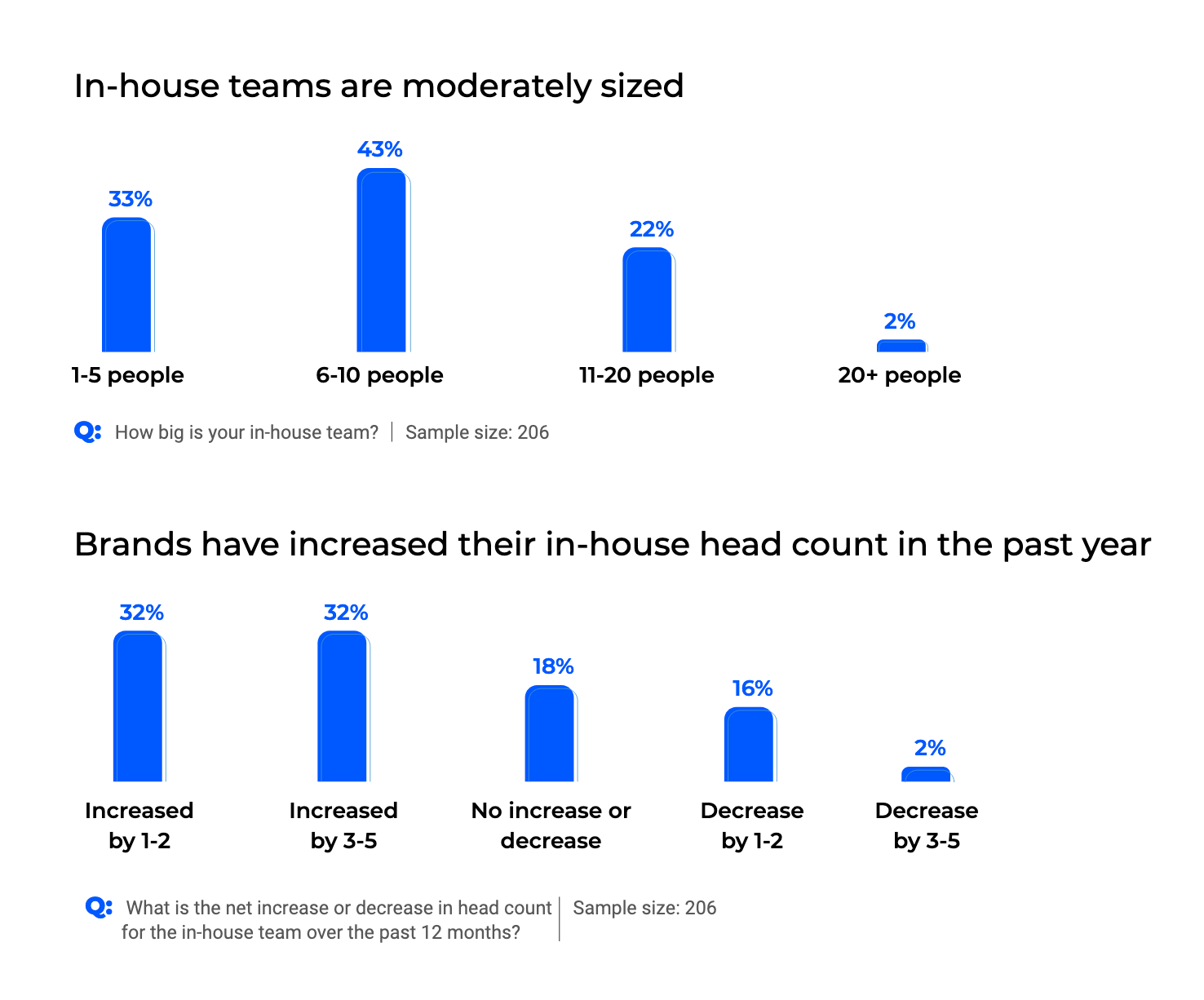
The pandemic effect: Creativity goes up
Over half (58 percent) of the respondents say that the pandemic has increased creativity in their in-house teams. To achieve this brands used collaboration tactics and technology that enables collaboration, to keep in-house teams motivated and inspired during the pandemic. In-housing teams are made up of many specialisms, from content creation to media buying, so brands used workshops and technology to keep communication, cross collaboration and creativity in a robust place for remote teams. The majority of brands (66%) introduced or increased creative workshops and 65% increased cross team collaboration tasks.
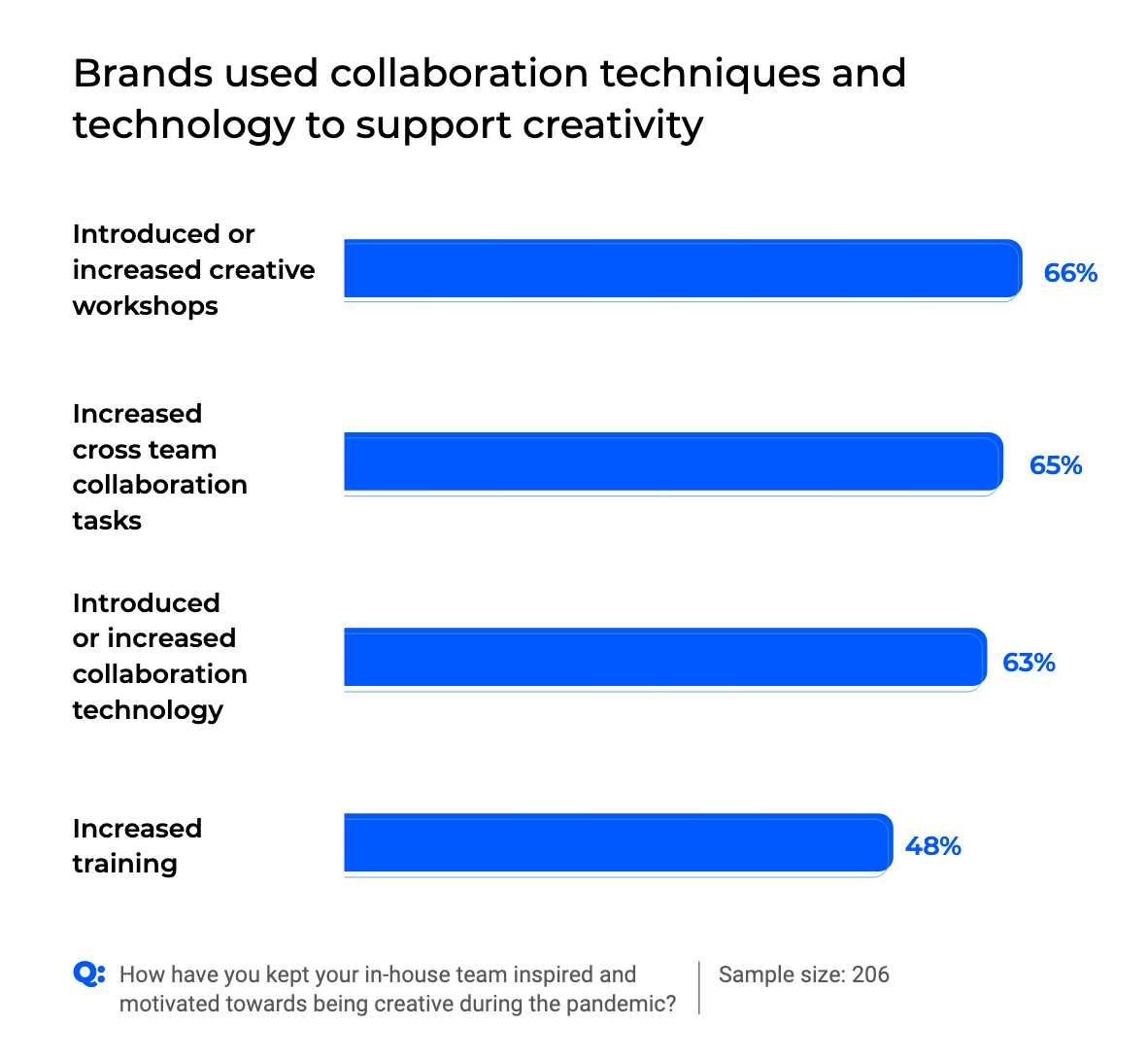
Technology enables teams to stay creative
Key drivers for moving digital marketing in-house are the time and attention given to the brand and being closer to the brand messaging.The top three aspects of in-housing that have enabled teams to stay creative during the pandemic are collaborative technologies, increased team togetherness, and flexibility to pivot to different media.
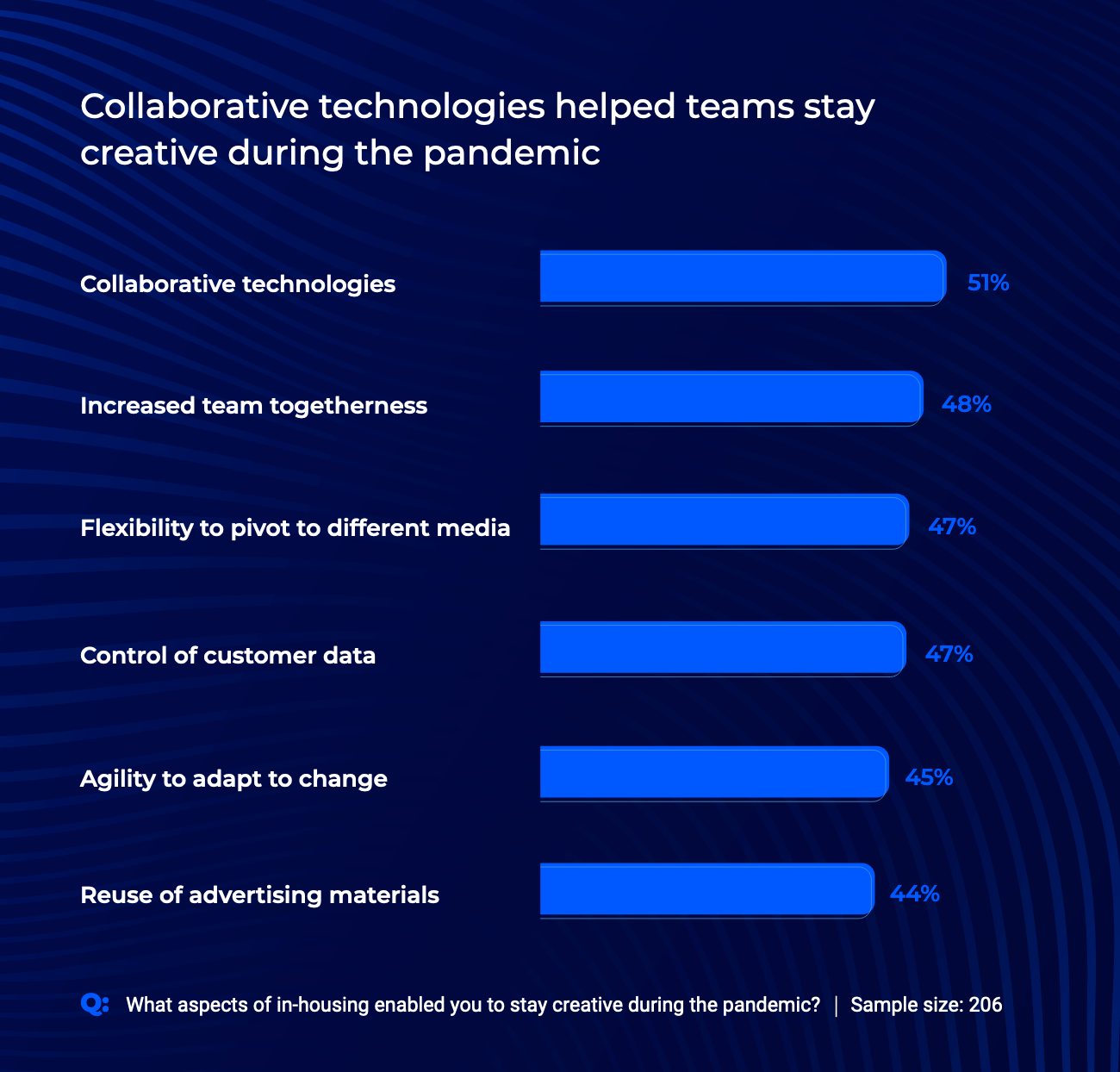
A changing landscape:In-house models and agency spend
In-housing is a popular choice for brands and their setups are diverse. Almost three-quarters (73%) of our respondents have moved at least part of their digital marketing in-house and 27% plan to in-house in the future. Setups range from full in-house agencies to hybrid models that mix the best of in-house and specialized agencies.
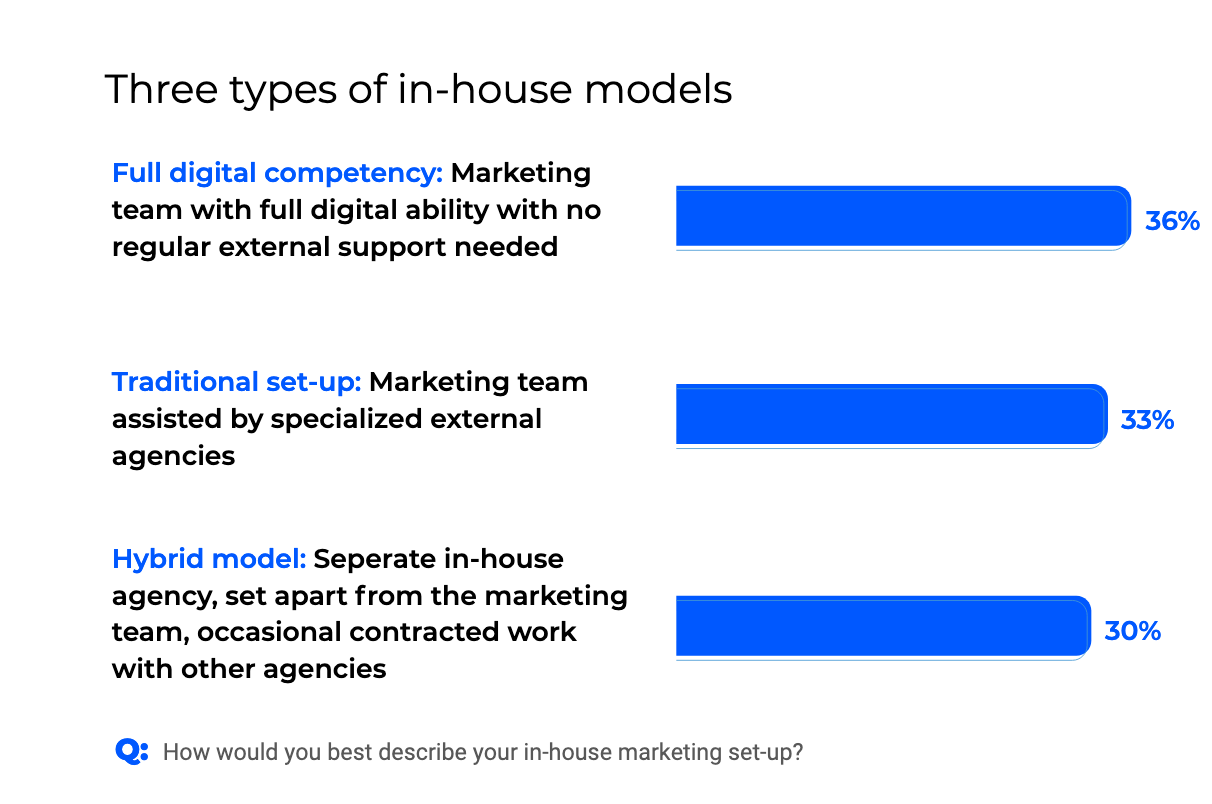
In-house skills:Why the benefits cancel out the barriers
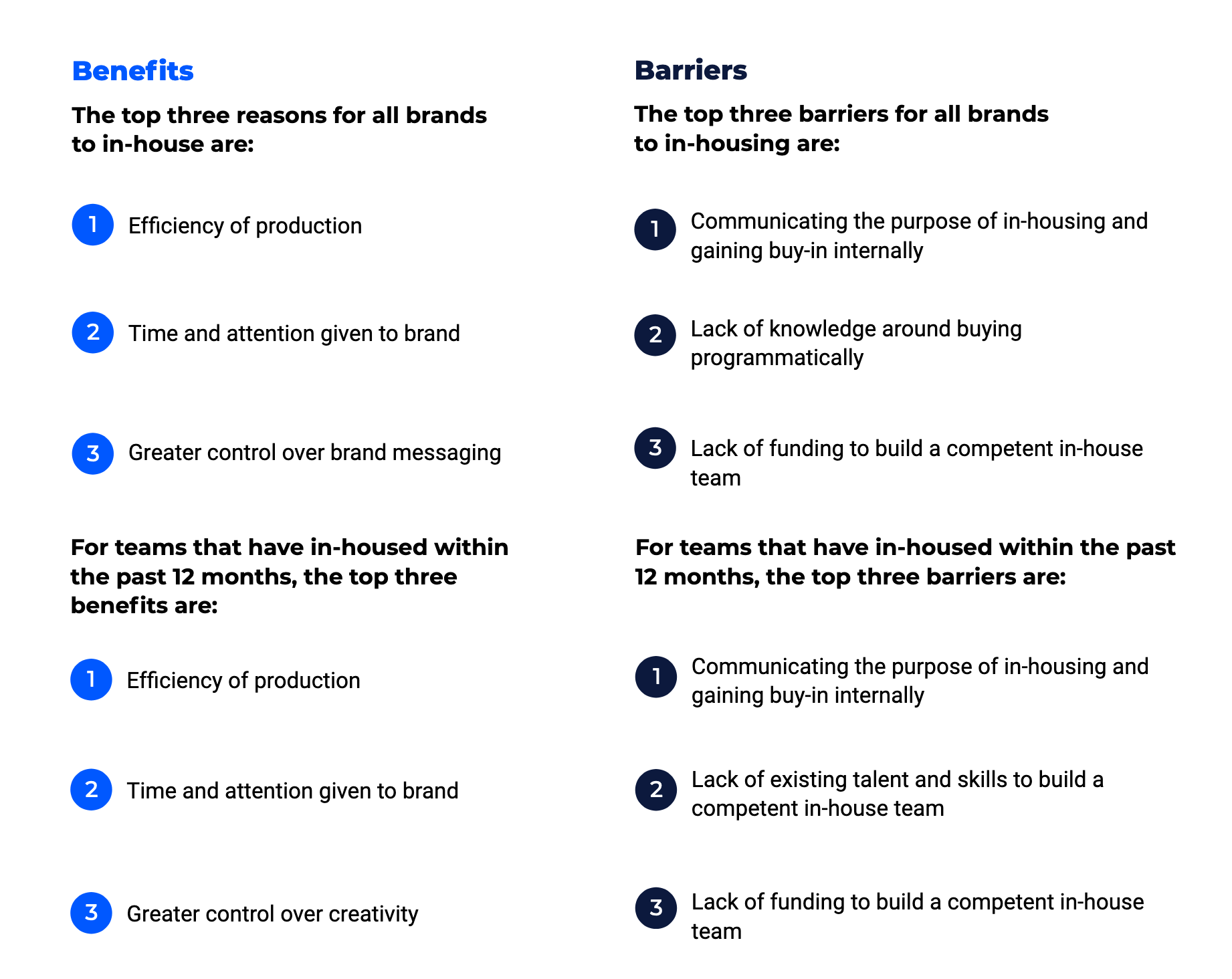
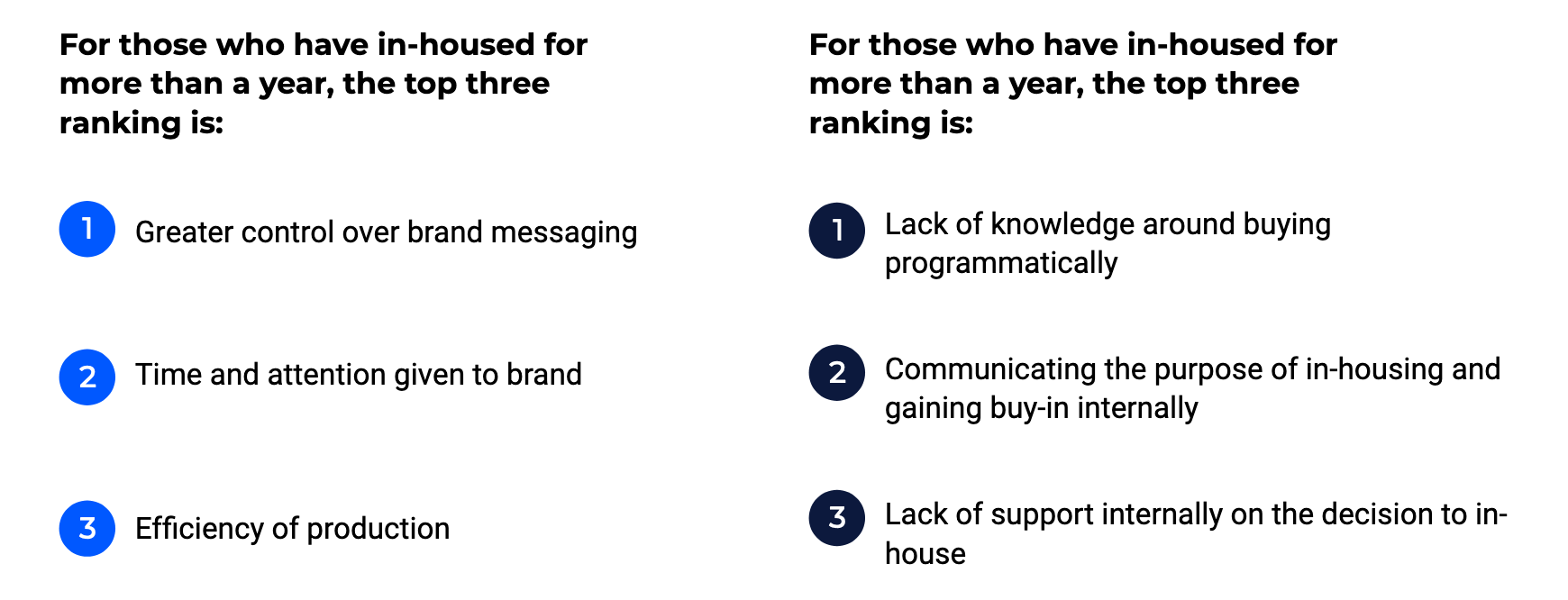
The benefits listed above can outweigh some of the challenges that brands are experiencing, particularly around communication and gaps in skills and knowledge, both of which can be remedied by in-housing.
Increased creativity when in-housing
More than half (56%) of respondents say their team has become more creative since in-housing. And those that say creativity has increased have also stated that their teams are now more curious to developing new skills, and offering new ideas and strategies more frequently.
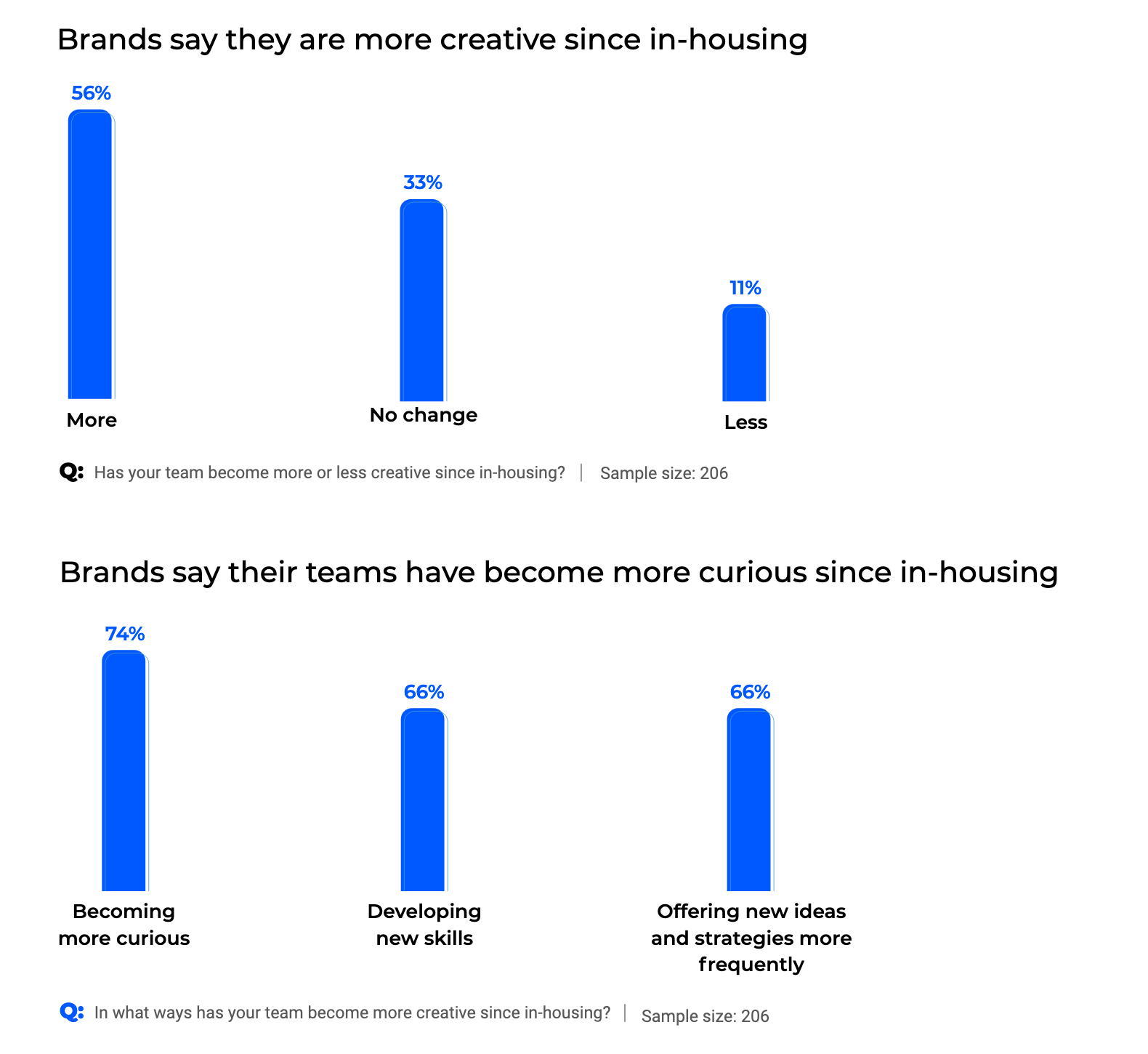
Technology is a central cog in any in-housing team
Technology allows marketeers to focus on the creative aspects of the job. It can be an enabler of innovation and it’s the power behind the collaboration efforts that have resulted in increased creativity. Our respondents say that technology has impacted in-housing teams' use of data, creativity and collaboration too — these teams are using data more than ever before; they say creativity levels have been boosted and they’re seeing more collaboration.
Marketeers are living in extraordinary times and as teams enter another year of uncertainty, the landscape is marked by changing working practices. Many brands adapted to the pandemic and remote working, and many started or continued with in-housing digital marketing as well. In-housing will be an essential part of business in 2021 as we enter a second year of pandemic-fueled uncertainty — and remote work.


